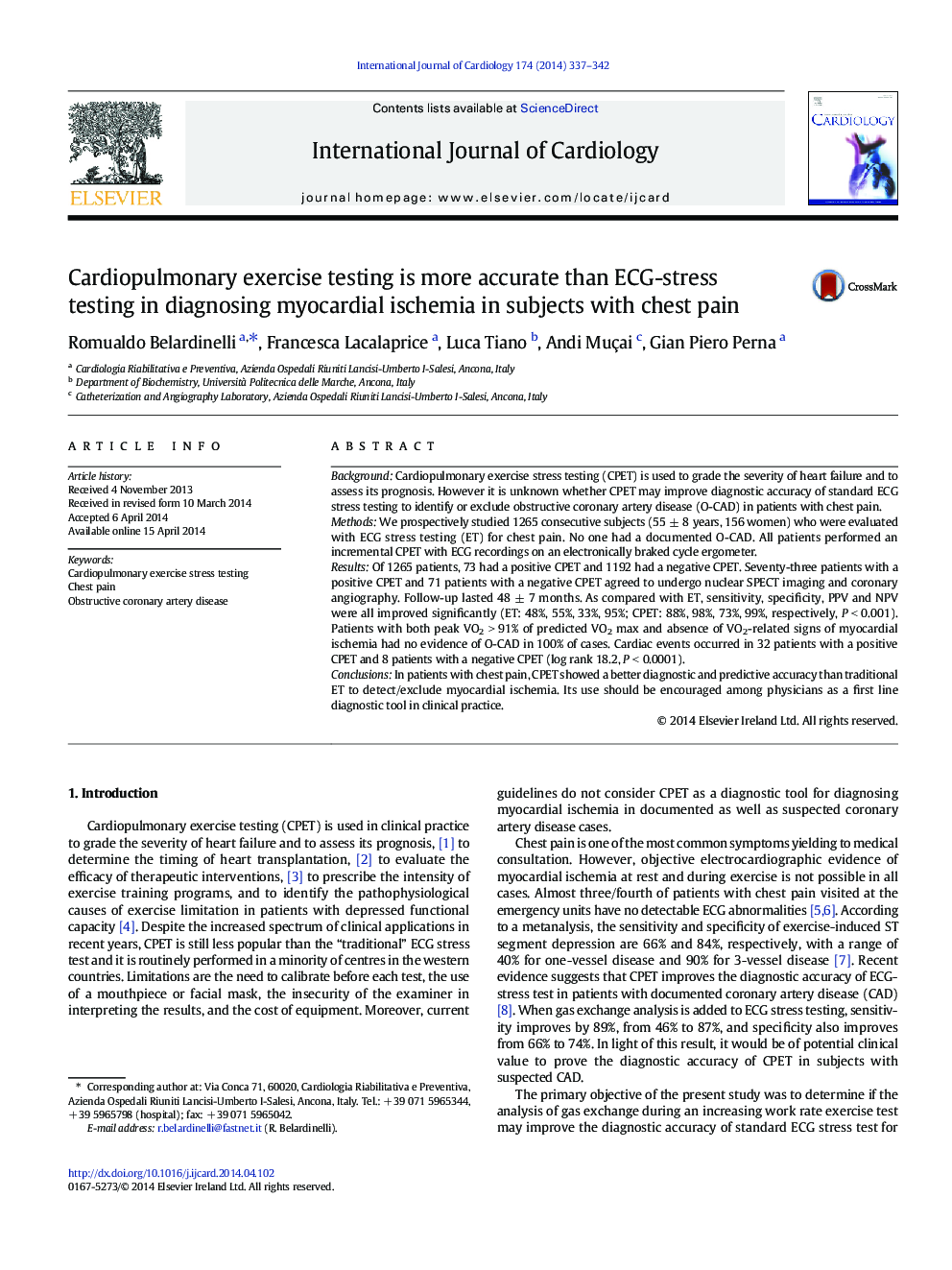| Article ID | Journal | Published Year | Pages | File Type |
|---|---|---|---|---|
| 5970191 | International Journal of Cardiology | 2014 | 6 Pages |
BackgroundCardiopulmonary exercise stress testing (CPET) is used to grade the severity of heart failure and to assess its prognosis. However it is unknown whether CPET may improve diagnostic accuracy of standard ECG stress testing to identify or exclude obstructive coronary artery disease (O-CAD) in patients with chest pain.MethodsWe prospectively studied 1265 consecutive subjects (55 ± 8 years, 156 women) who were evaluated with ECG stress testing (ET) for chest pain. No one had a documented O-CAD. All patients performed an incremental CPET with ECG recordings on an electronically braked cycle ergometer.ResultsOf 1265 patients, 73 had a positive CPET and 1192 had a negative CPET. Seventy-three patients with a positive CPET and 71 patients with a negative CPET agreed to undergo nuclear SPECT imaging and coronary angiography. Follow-up lasted 48 ± 7 months. As compared with ET, sensitivity, specificity, PPV and NPV were all improved significantly (ET: 48%, 55%, 33%, 95%; CPET: 88%, 98%, 73%, 99%, respectively, P < 0.001). Patients with both peak VO2 > 91% of predicted VO2 max and absence of VO2-related signs of myocardial ischemia had no evidence of O-CAD in 100% of cases. Cardiac events occurred in 32 patients with a positive CPET and 8 patients with a negative CPET (log rank 18.2, P < 0.0001).ConclusionsIn patients with chest pain, CPET showed a better diagnostic and predictive accuracy than traditional ET to detect/exclude myocardial ischemia. Its use should be encouraged among physicians as a first line diagnostic tool in clinical practice.
